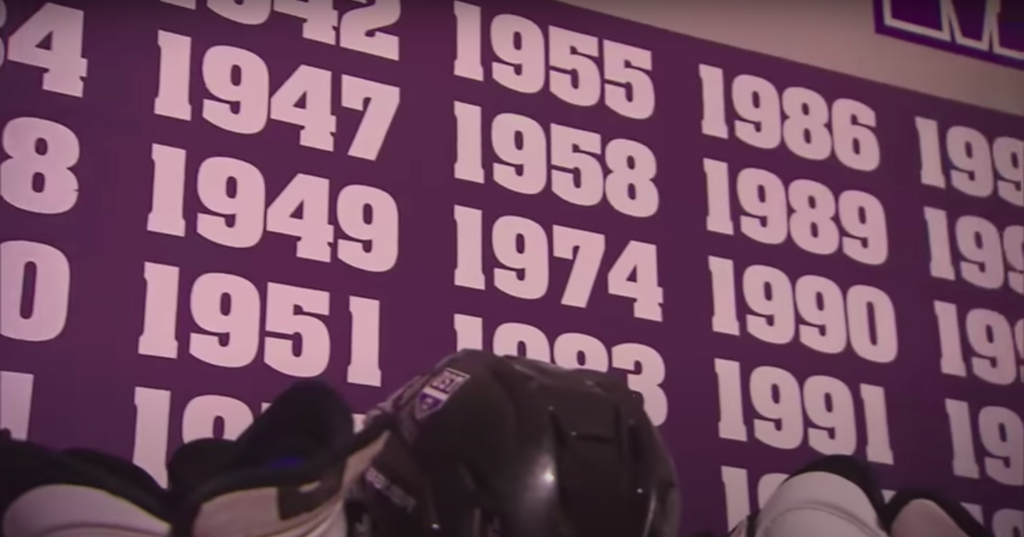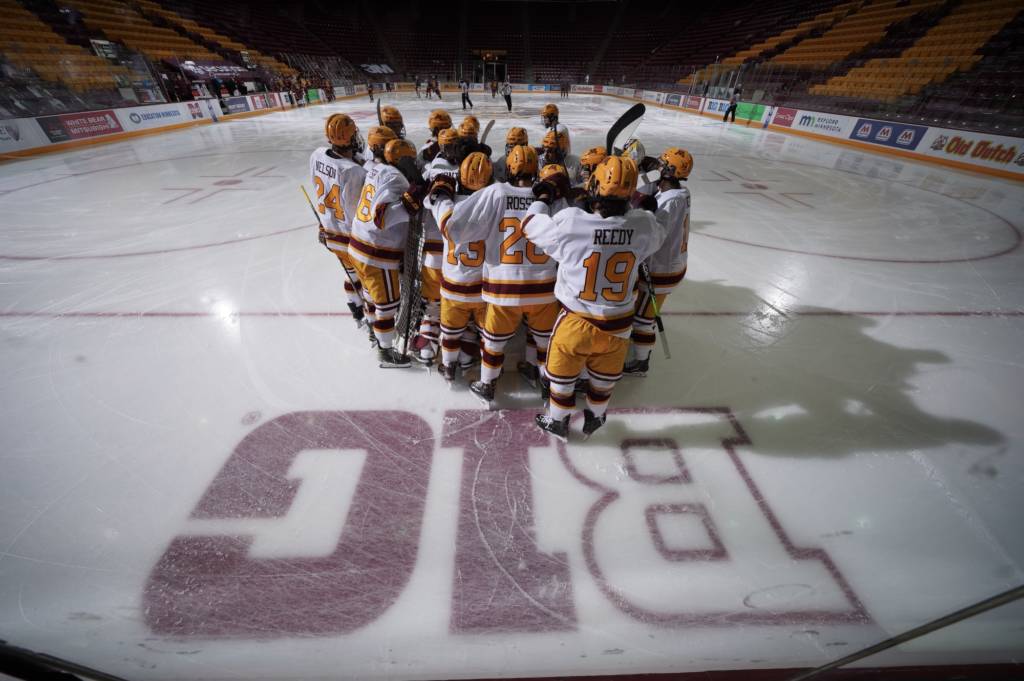And the Tommies make it six.
A side effect of the University of St. Thomas receiving a waiver to move directly from Division III to Division I is the “State of Hockey” evolving in both men’s and women’s D1 hockey.
The path to change has been quick. Minnesota boys wanting to stay in-state had two options — Minnesota and Minnesota Duluth — as recently as the mid-1980s. Now the sixth Minnesota school with a Division I hockey program and second men’s hockey program to make the move this summer, joining Long Island University, the Tommies add to the state’s college hockey legacy. Having already been perennial D3 NCAA Tournament contenders, UST adds another option for Twin Cities college hockey fans to cheer.
So where does St. Thomas and college hockey go from here? Let’s dive in.
Which Conference Do They Join?
While St. Thomas’ move may be happening in these uncertain times, the Tommies joining Division I hockey in 2021-22 is perfect timing.
St. Thomas will join the Pioneer Football League for football, the WCHA for women’s hockey and the Summit League for other sports. The WCHA ends up being a perfect fit for both given the St. Paul location for the league and the WCHA needing an eighth western team after North Dakota dropped its women’s hockey program in March 2017.
But UST has not chosen a men’s hockey conference yet.
Rather than join the WCHA on the men’s side like the women’s team, St. Thomas has multiple options. Oddly enough, the favorite is a conference yet to play its first season.
Seven of the 10 current schools plan on leaving the WCHA to (re-)form the CCHA in 2021-22, leaving the WCHA men’s league’s future in peril. The Tommies fit in regionally with the departing seven in a new Midwestern-based league. St. Thomas adds a third Minnesota team alongside Bemidji State and Minnesota State, giving those two another schools around them for easy travel.
A trip to St. Paul is an easy flight for the Michigan schools, especially compared to Alaska or Alabama (home to the three WCHA schools left out). CCHA Commissioner Don Lucia, the former Gophers head coach, told reporters last month that St. Thomas was a program the league “would certainly have an interest in” and that conversations have taken place.
While the Tommies would make an even-numbered eighth team in a league, the other option would be the NCHC picking up St. Thomas and another school as the ninth and tenth members.
Going from D3 to a league producing the past four national champions would be quite a jump, but there are teams that fit UST’s profile. Denver, Omaha, and North Dakota are Summit League members in all sports besides hockey and football. It also sits in the geographic center of the conference. Minnesota State previously applied in 2016, as did independent Arizona State. However, the NCHC decided it was happy with its current membership and did not expand.
The NCHC has recently said it remains happy with eight teams.
Regardless, St. Thomas enters in a unique position. Several schools, including the two newest programs prior to UST, LIU and Arizona State, are struggling to find a conference home. That doesn’t appear to be a problem for the Tommies.
Recruiting
Another issue is whether St. Thomas can gain a recruiting foothold in its hometown.
A second team sitting smack dab in recruit-rich Twin Cities adds more competition for the top metro players. (In 2019-20, 201 Minnesotans played D1 men’s hockey, more than any other state or province.) But make no mistake, there is a lot of competition. Besides the crosstown Gophers, Bemidji State, Minnesota Duluth, Minnesota State, North Dakota, Notre Dame, St. Cloud State and Wisconsin all have large, historical Twin Cities recruiting pipelines. The number is similar on the women’s hockey side.
While the Tommies offer an alternative for players wanting to play Division I hockey near home, St. Thomas will be fighting against the history and other advantages those programs possess.
Still, there are Midwestern teams that recruit beyond the Twin Cities to find success. Minnesota State’s recent run of WCHA titles is in part due to finding older diamonds in the rough players from outside the area. Germany (Marc Michaelis and Parker Tuomie), Florida (Nathan Smith), Illinois (Dryden McKay and Connor Mackey), and California (Nick Rivera) were all represented in major roles this past season alongside 13 Minnesotans. Each played multiple years of junior hockey.
Out East, several schools in high-competition areas of New England find success recruiting internationally rather than competing with schools like Boston University and Boston College. Both American International and Connecticut have hit program highs while largely avoiding the area.
It’s an option for St. Thomas to stand out among its Midwestern peers. At a time when schools are finding more ways to compete, it’s a good position for the Tommies to find one (or more) of its own.
Facility
One longterm question that leads into a conference and recruiting will be how St. Thomas upgrades to Division I facilities. The current off-campus St. Thomas Ice Rink seats half the amount of the next-smallest CCHA/NCHC school. Even the new TRIA Rink in downtown St. Paul holds 1200 people and is more than one-third of the size of Colorado College’s new arena.
Playing an 800-seat rink is one reason the NCHC turned down Arizona State — the Sun Devils do have plans for a larger, on-campus rink now — and is something the Tommies will come across. Like ASU, the option is there to move bigger games to an NHL rink (Xcel Energy Center), but there isn’t a good mid-sized rink in the Twin Cities unless St. Thomas builds one.
At the end of the day, it’s great for Division I hockey to have St. Thomas joined the ranks. In both men’s and women’s hockey, the Tommies serve as a game-changing addition. In an era where most schools looking to add the sport are larger, Power Five conference teams, UST shows it’s possible for other schools to make the leap. College hockey needs more western men’s and women’s hockey programs to fill out the sport.
And as Arizona State and Penn State both recently showed, new programs do not need much time to make noise.

